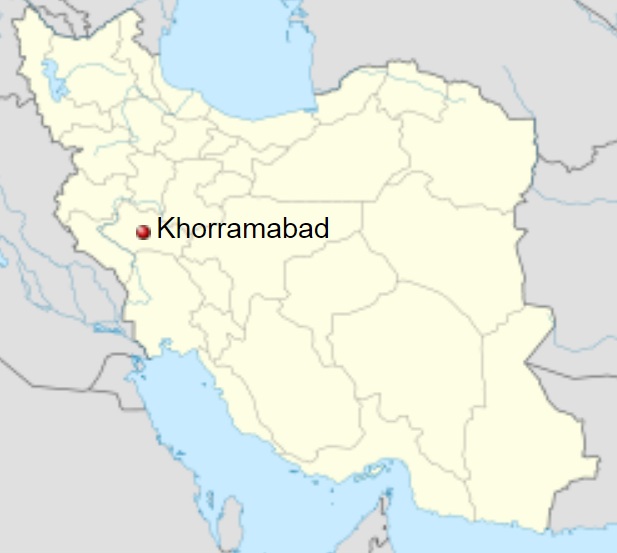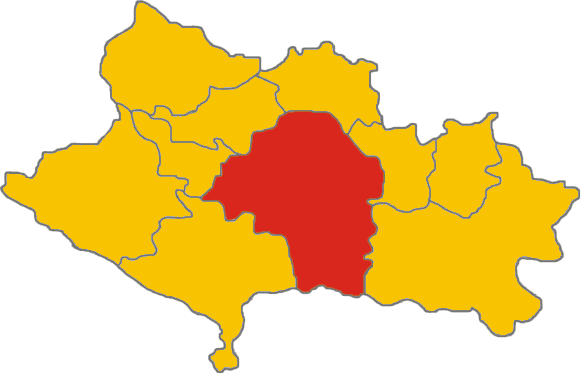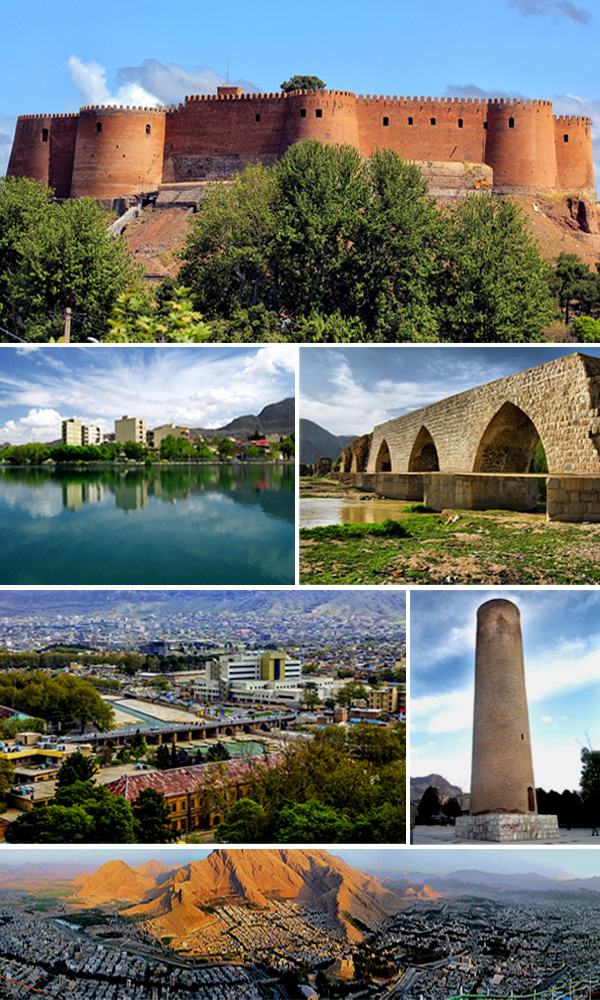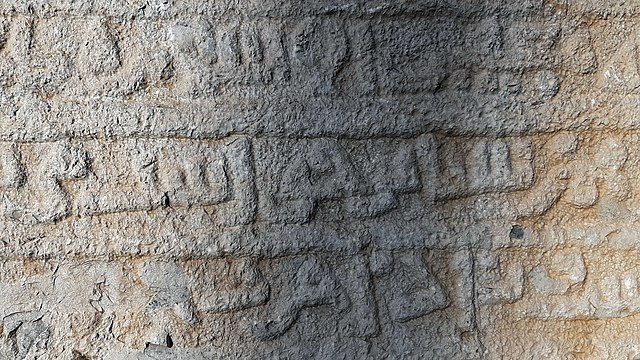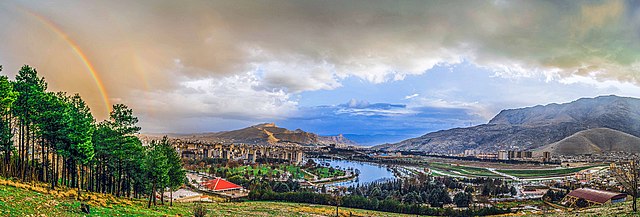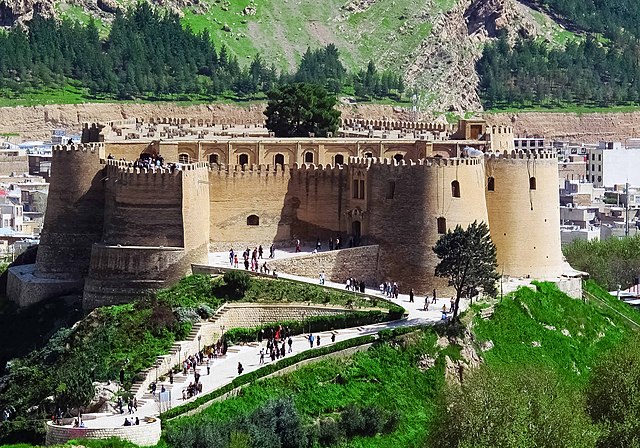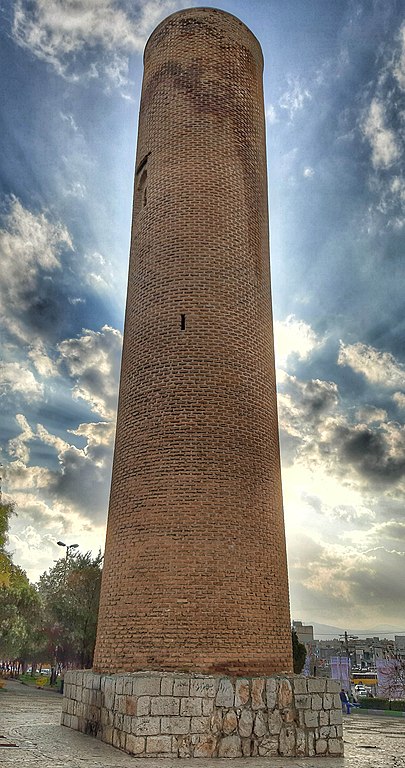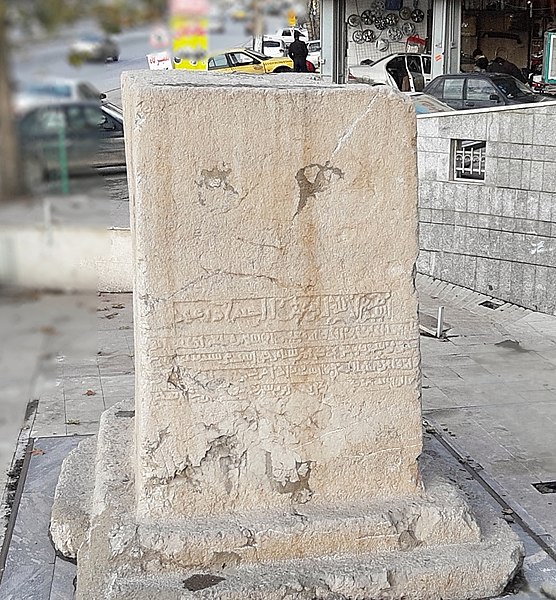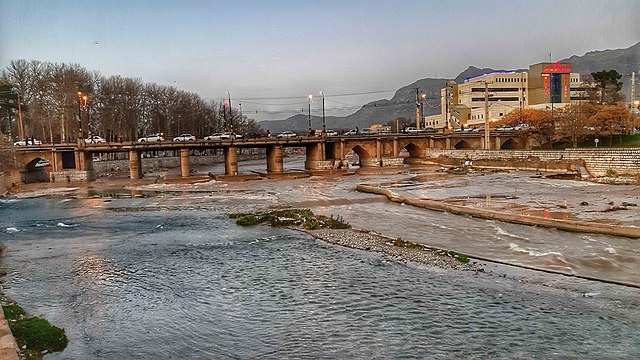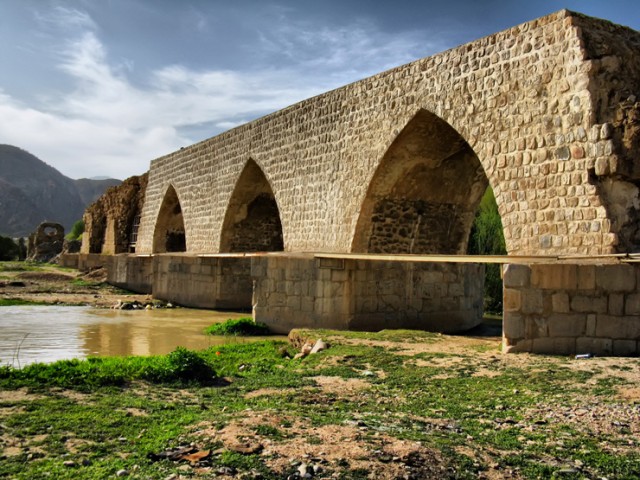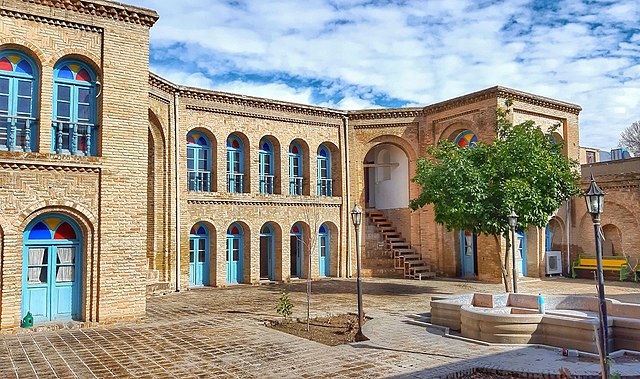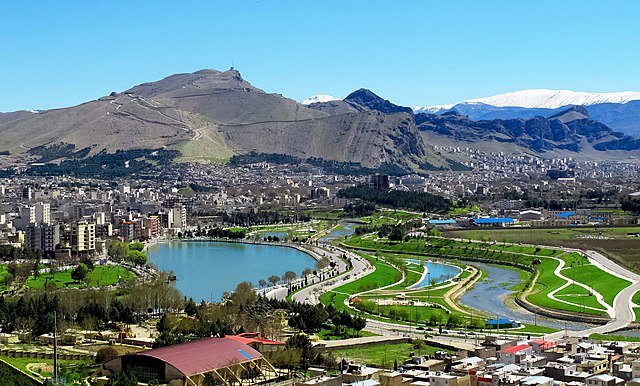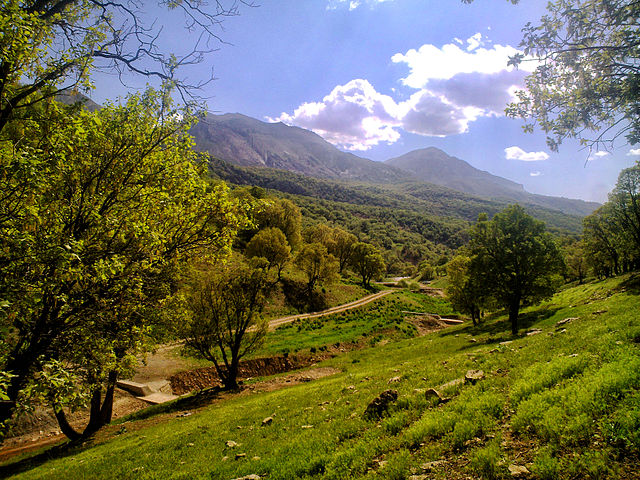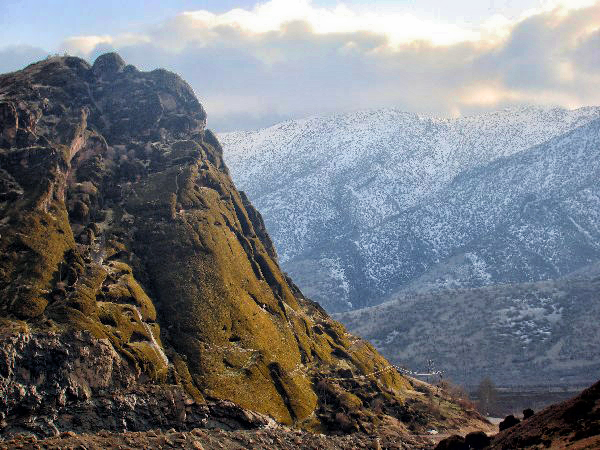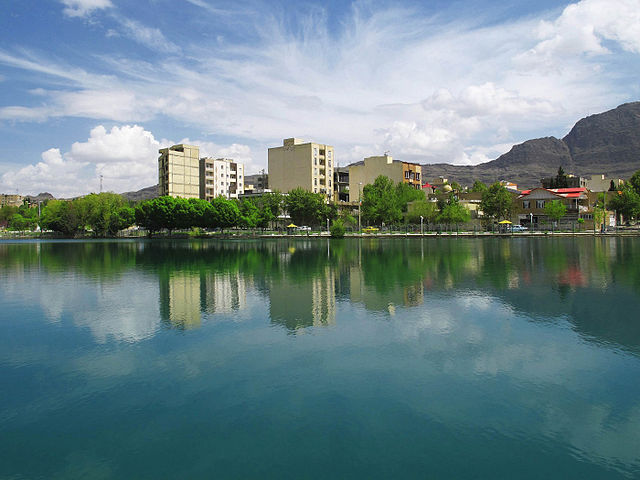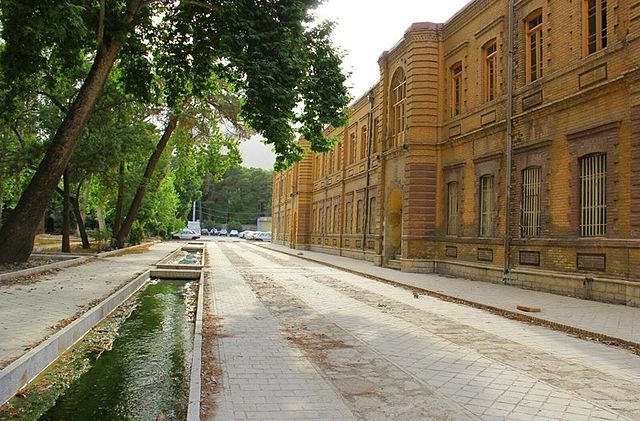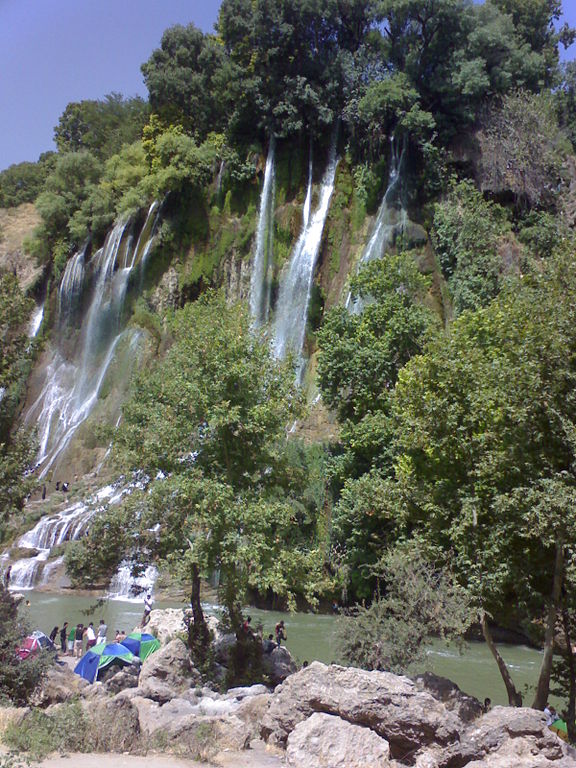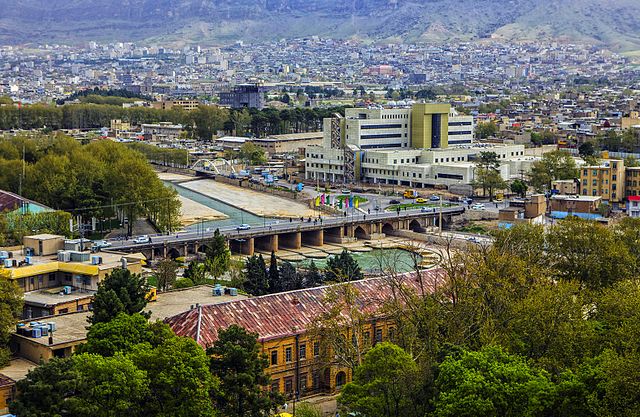
| KHORRAMABAD
Khorramabad, Iran
The territory of the Khorramabad inside the province of Lorestan
Montage of Khorramabad, Clockwise:Falak-ol-Aflak Castle, Keeyow lake, Shapuri bridge, View of the Khorramabad city, Brick Minaret, Panorama of the Khorramabad Country
: Iran
Bakhsh : Central
Elevation : 1,147 m (3,763 ft)
Khorramabad About this soundpronunciation (Persian: KhorMoa as local say - also Romanized as Khorramabad, Khoramabad, Khurramabad, Khorram Abad and occasionally Khur Ramabad) is a city and the capital of Lorestan Province, Iran. At the time of the 2006 census, its population was 328,544, in 75,945 families. Khorramabad is situated on the Zagros Mountains. Khorramabad Airport is 3 km south of the city proper.
The city population is predominantly Lur and Lak, although the two groups are closely related. Although not a major tourist destination, it is quite scenic and possesses several attractions, such as five Paleolithic cave-dwelling sites. In the city center, a tall citadel called Falak-ol-Aflak (The Heaven of Heavens), a relic of the Sassanid era, is now a nationally popular museum.
Economically, it is the regional base of the agricultural industry.
Etymology
:
"KhorMoah" has been translated as "Khorram Abad" in Farsi which means the green and beautiful place.
Modern Persian -âbâd, meaning "settlement" or "abode", derives from Middle Persian apat ("populous"). However, according to linguist Sasha Lubotsky, the Persian term abad might derive from Proto-Iranian *apata ("protected"), rooting from Proto-Indo-European *peh2- ("to protect"). Thus, it can mean "protected settlement".
History
:
Shapurkhast
:
ShapurKhast name, in Kufic, on Sang Nebeshteh monument
Islamic era :
Hamdallah Mustawfi writes: Khorramabad was a beautiful city, now it is destroyed.
Hazaraspids
:
Safavid
dynasty :
Qajar
dynasty :
Pahlavi
dynasty :
Geography
:
Climate
:
Shapur Khast Castle ShapurKhast Castle, Dež-e Shapur-Khwast, Falak-ol-Aflak Castle, known in ancient times as Dezbaz as well as Shapur-Khast, is one of the most impressive castles in Iran. It is situated on the top of a large hill with the same name within the city of Khorramabad, the regional capital of Lorestan province. The Khorramabad River runs past the eastern and south-western side of the ShapurKhast hill providing the fortress with an element of natural protection. Today, the western and northern sides of the hill are bordered by the residential districts of Khorramabad. This gigantic structure was built during the Sassanid era (226–651). It has been known by a number of names since it was built over 1800 years ago. Recorded names have referred to it as Shapur-Khast fortress, Dezbaz, Khorramabad castle, and ultimately the Falak ol-Aflak Castle. The foundations of the actual castle measure approximately 300 meters by 400 meters. The height of the entire structure, including the hill, reaches up to 40 meters above the surrounding area. This space is divided into four large halls, and their associated rooms and corridors. The rooms all surround two courtyards with the following measurements: the first courtyard measures 31×22.50 meters and the second 29x21 meters. . When originally built the castle used to have 12 towers, but only 8 remain standing today. The building's entrance is situated towards the north, within the body of the north-western tower.
From the initial day of erection the castle served a whole variety of purposes including political, military, governmental and social. Now, Dec. 2019, archaeology and anthropology museums are located inside the castle. Bronzes of Lorestan are among the interesting handmade objects inside the archaeology museum. This scarce monument has been inscribed on the National Heritage List under the registration number of 883.
Gerdaw
Bardina :
Brick Minaret of Khorramabad
Brick minaret :
The Iranian minaret are combination of the Indian Stup, commemorative columns, central Asia tradition of tower building for defensive and communication purposes. Brick Minaret of KhorramAbad was probably used as a guidepost for caravans that pass the city, i.e. communication purpose.
The current height of minaret is 29.45 meters. Since one of the windows of the minaret is located on top of it, undoubtedly its height was higher. A cylindrical column was built inside the minaret and through 99 spiral staircases around the column one can reach to the top of the minaret. The entrance is opened to the west and its characteristics are as follows: length: 80 cm, height: 220 cm. The minaret has six windows of different sizes. The windows spread the light into the dark corridor. Brick and mortar are its main construction material.
This monument has been inscribed on the national heritage list under registration number 1930.
Sang Nebeshteh :
Sang Nebeshteh monument, 1119 AD, KhorramAbad, Lorestan, Iran Sang Nebeshteh (inscribed stone) is an engraved cubic shape monument with 3.54 m heights located at the eastern part of KhorramAbad city. It dates back to 1119 AD and Saljuq dynasty. It has been written in Kufic script and its subject is governmental rules of ShapurKhast, which is currently known as KhorramAbad city. The carved name of ShapurKhast city can be clearly seen on this monument. This name verifies the existence of ShapurKhast city during old days. It has been inscribed on the national heritage list.
Pole Gap (Gap Bridge) :
Pole Gap Pole Gap is a Safavid multi-arch bridge passing through KhorramAbad city and located near to ShapurKhast castle. Its twenty arches except its breakwaters and piles are made from bricks and mortar. The height of bridge is about 18 meters. Some of its arches are in the underground of the shops in two sides of the bridge. The bridge is very similar to Si-o-se-pol at Isfahan. About fifty years ago, an inscription has been found inside one of the ruined arches. The inscription has two meters length and 85 centimeters height. Probably, it has been written to protect the bridge form evil eyes and natural phenomena.
Shapuri bridge, broken bridge, Tage Pil Eshkesah Shapuri bridge has been constructed on KhorramAbad river (Gelal river) by the order of Shapur I during Sassanian period. It was built in the historic rout between Shapurkhast, Tarhan and Ctesiphon, the capital of Sassanian. Lorestan has more than 70 historical bridges and form this perspective is considered as the capital of ancient Iranian bridges.
Shapuri bridge has 312 meters length and elongated in the east-west direction. Some scholars believe that this bridge was the first gigantic bridge in Lorestan province and other bridges in the province has been built by inspiring from it. It has 28 arches and 27 piles, with surface are of 61 square meters. Currently, five of its arches are intact; the others have been destroyed by natural phenomena. The arches of the bridge are made in the form of a wishbone. The piles and breakwaters of the bridge are in the form of six lateral lozenges made of limestone. Probably the bridge also was used to distribute water. Materials of the bridge are river stones and stone chips in the arches and truncated stones in the piles. The bridge floor is paved in red block stones that have lost their square shape due to erosion. This attractive, huge bridge from Sassanid dynasty has been inscribed in the national heritage list under registration number 1058.
AkhoundAbu House :
Akhound Abu House, Qajar dynasty, Khorramabad, Lorestan Akhound Abu House is located in the historical texture of KhorramAbad city near to BabaTaher neighborhood and ShapurKhast castle.
It belonged to Mirza Mohsen Gazi, who was chief justice of the city during late Qajar and early Pahlavi dynasties.
The house is semi-introverted and is divided to winter and summer sections. The first one which is used during winter has two important rooms: Panjdari and Sedari. Panjdari is also called Shahneshin and was the most attractive room of the house. Muqarnas, Zigzag bricks (Khefteh-Rasteh), Golandaz are the main decoration of the house. The construction materials of the house are stone, brick, wood and mortar.
Currently, museum of Lorestan's handicrafts is located inside the house. Tickets to visit this house are free. This monument has been inscribed on the national heritage list under registration number 2432.
Keeyow lake :
Keeyow Lake in Khorramabad city Keeyow lake is a natural lake located in the Northwest of Khorramabad city. In 1975, It has been constructed by the order of Ali Mohammad Saki, the late mayor of KhorramAbad. This lake spans a seven-hectare area and has a depth of 3 to 7 meters. It is the sole natural lake in Iran which is located inside a city. The lake is an appropriate place for aquatic animals, native and migratory birds. The amusement park as well as other recreational facilities next to the lake enhances its aesthetic and geotouristic values. The main spring of the lake is located in the northern part of the lake and is supplied by aquifers from nearby mountains. Since the spring is a seasonal one, during winter the water is supplied from another permanent spring located under ShapurKhast castle, Golestan spring.
During holidays many tourists and locals spend their leisure time in the amusement park or use other facilities inside a park located near to the lake, Keeyow Park. It is the most important park of the city. Everyday morning, many locals come to use the sporting facilities and/or do the hiking and running around the lake.
Photo gallery :
Nojian oak forest Khorramabad county
Makhmalkuh Khorramabad county
Shapur Khast
Keeyow lake Khorramabad
Sarbazkhane building - khorramabad
Building in Khorram abad
Bisheh waterfall Khorramabad county
Khorramabad city Khorramabad county
Source :
https://en.wikipedia.org/ |
